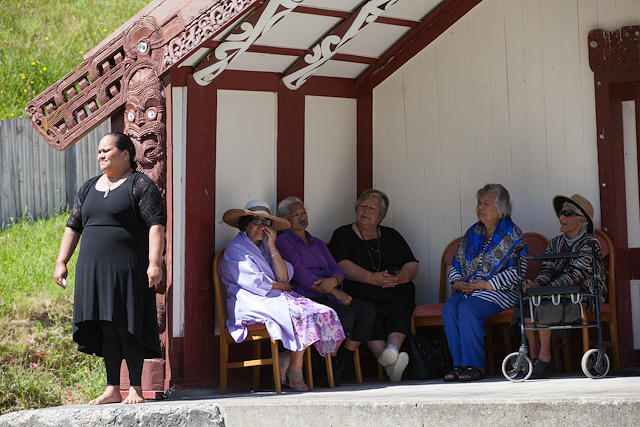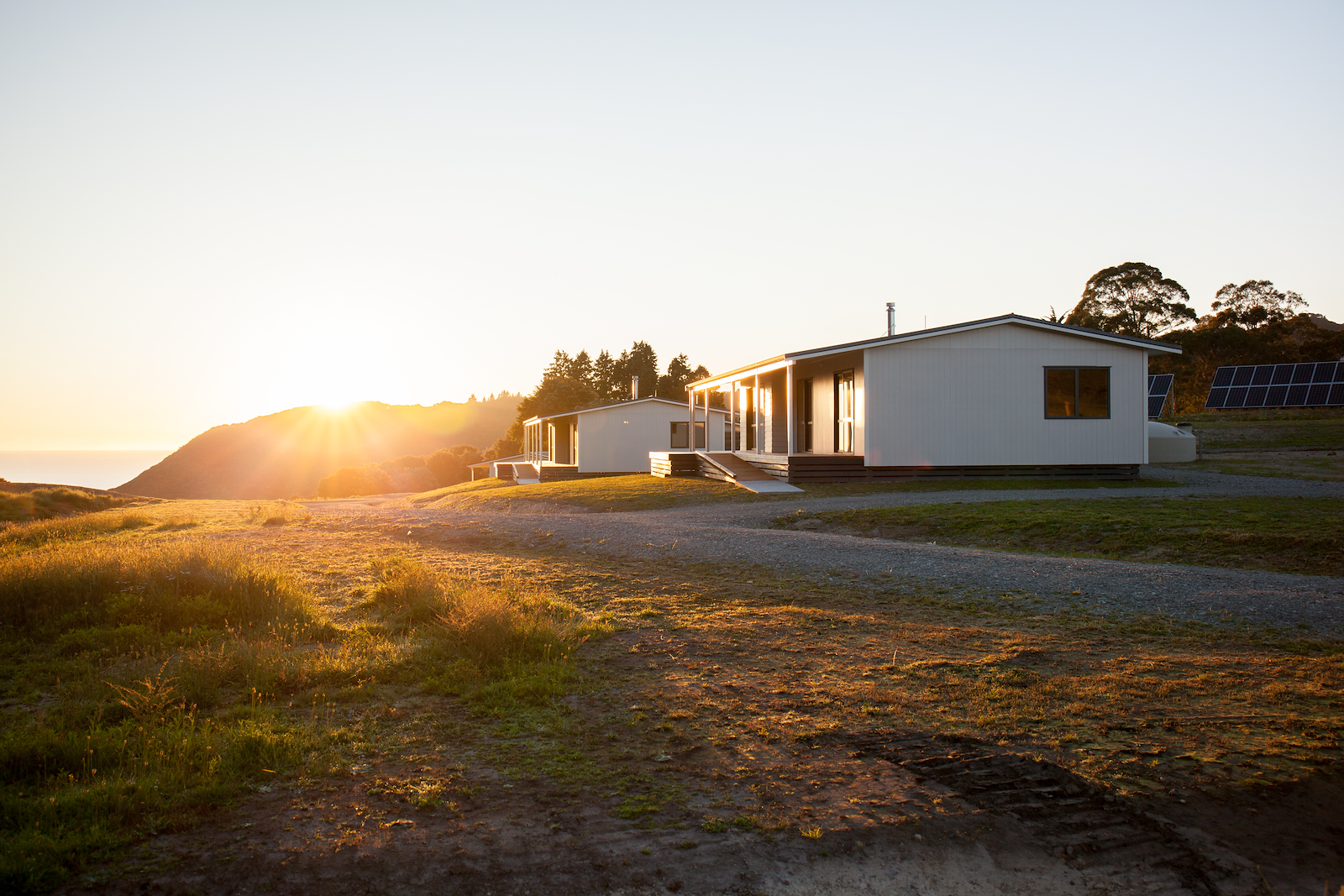It has been a long journey for Whareponga whānau but it is all worth it. A new papakāinga development is paving the way to bring life back to their homeland.
Published: Wednesday, 20 December 2017 | Rāapa, 20 Hakihea, 2017

“Hoki mai koe ki Whareponga kia whakamatau i ngā waiparapara o te Hotohoto e…”
“Return to Whareponga that you may be blessed by the healing waters of the Hotohoto river…”
If you take a leisurely ninety-minute drive north of Gisborne, and veer east of Ruatoria, you’ll soon arrive upon Whareponga Marae. Its beautifully sheltered setting, where the surrounding hills surge up around the Wharenui, frame the marae with its green bush clad and exposed cliff vista. Just beyond the hills, the ebb and flow of Te Moananui a Kiwa can be heard - a poignant reminder of the great Te Moananui a Kiwa Ngarimu VC who was born there in 1919 and subsequently killed in action in the Second World War in 1943.

The opening of the Whareponga papakāinga. Photo by Josie McClutchie.
Deep in the heart of Te Tairāwhiti, Whareponga has a rich history, being the nexus of Te Aitanga-a-Mate hapū, taking their name from their famed ancestor Materoa. Her grandson, Pakanui along with Tūwhakairiora avenged the death of her father Poroumata - events which solidified these two ancestors in the records of Ngāti Porou history, providing an important genealogical foundation for all the descendants of Porourangi.
Like many settlements along the Coast, Whareponga has endured and survived the impact of migration, modernisation and movement of people away from the coast. And in keeping with its proud history, the incorporation responsible for the land on which the marae and surrounding area sits – The Proprietors of Pahiitaua & Other Blocks Inc – recently opened a papakāinga with four new homes. Infrastructure for the papakāinga can support six homes.
It’s Secretary and Trustee, Pia Pohatu, says is the result of a development project that was a while in the making.
“In 2010, we had a dream to establish a papakāinga as an enduring and mutual benefit for our whānau, marae and whenua,” she says.
“While we do not shy away from hard work, establishing the papakāinga has been quite a journey – it has felt like playing a jigsaw puzzle for seven years where some of the puzzle pieces don’t necessarily exist.”
Pia elaborates saying they had the vision, unity and support from their landowners for the project, but they did not have the finance or an established construction industry to do what might otherwise be a straightforward project for others.

Whānau gathered at signage. Photo by Josie McClutchie.
Their clear vision, whanaungatanga and being of one accord has buoyed them throughout this time.
“It has had its pressure cooker moments, but it’s mostly been inspiring, rewarding and fun.”
Their location also meant that independent and off-grid systems for power, water supply and wastewater systems were a necessity.
“We will re-establish the original orchard, have communal māra kai and areas beyond the homes for holding livestock for our whānau living there. Self-sufficiency and interdependent living has informed and future-proofed the whole development.”
Te Puni Kōkiri provided $1.3 million of funding for the Whareponga papakāinga project through the Māori Housing Network. The Network supports projects to improve housing outcomes for whānau Māori.
“These homes have been designed for local conditions and the whānau who live in them will be warm, dry and safe,” says Te Puni Kōkiri Regional Director for Ikaroa-Rāwhiti Mere Pohatu.

Tamariki swimming in the stream behind Whareponga Marae. Photo by Josie McClutchie.
“This housing project is indicative of the change in approach to housing needs on the East Coast. As each whānau becomes eligible for a house, they go through an intensive induction in to this way of living off the grid, recycling, conserving and living sustainably with the natural environment.”
The official opening event, held on the 3rd of December, brought beneficiaries of the incorporation, descendants and uri alike to celebrate this new development and remarkable achievement for Te Aitanga-a-Mate.
“Mīharo rawa atu taua rā! Sharing the occasion with our wider hapū and community was special - a true celebration of manaaki and whānau, hapū and iwi. He tākoha ēnei kāinga mā te hunga tiaki o Whareponga mā ngā uri whakatipu kia toitū te whenua, toitū te marae, toitū te iwi,” says Pia.
Photo credit for feature image: Josie McClutchie.
A guide to papakāinga housing
Te Puni Kōkiri supports whānau, hapū and iwi Māori to achieve their housing aspirations.
This booklet 'A guide to papakāinga housing' is a tool for you, your whānau and community. This guide sets out the process for developing papakāinga housing in three stages with checklists, tips and advice to progress your papakāinga housing development.
For papakāinga housing ideas, the first step is to contact your Te Puni Kōkiri regional office and talk to one of our advisors.
Phone 0800 758 956
Email maorihousing@tpk.govt.nz















